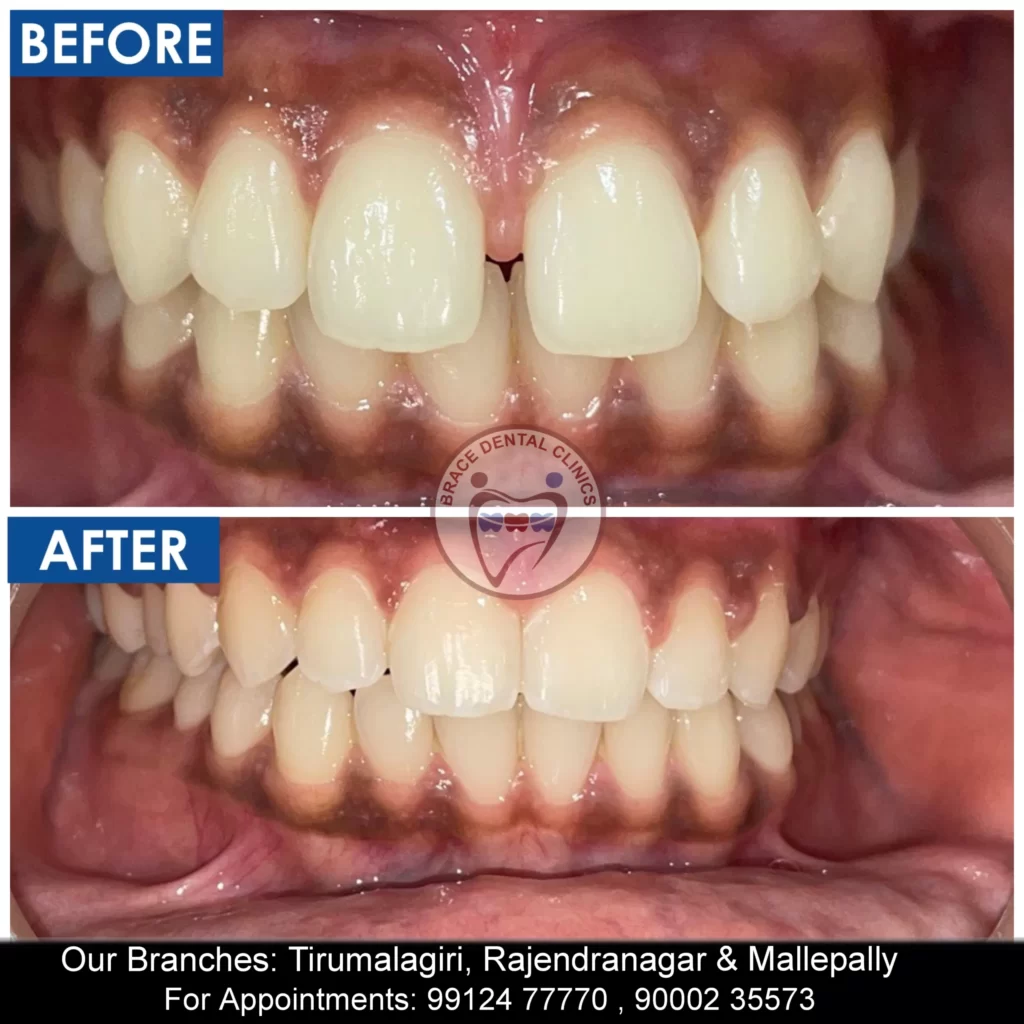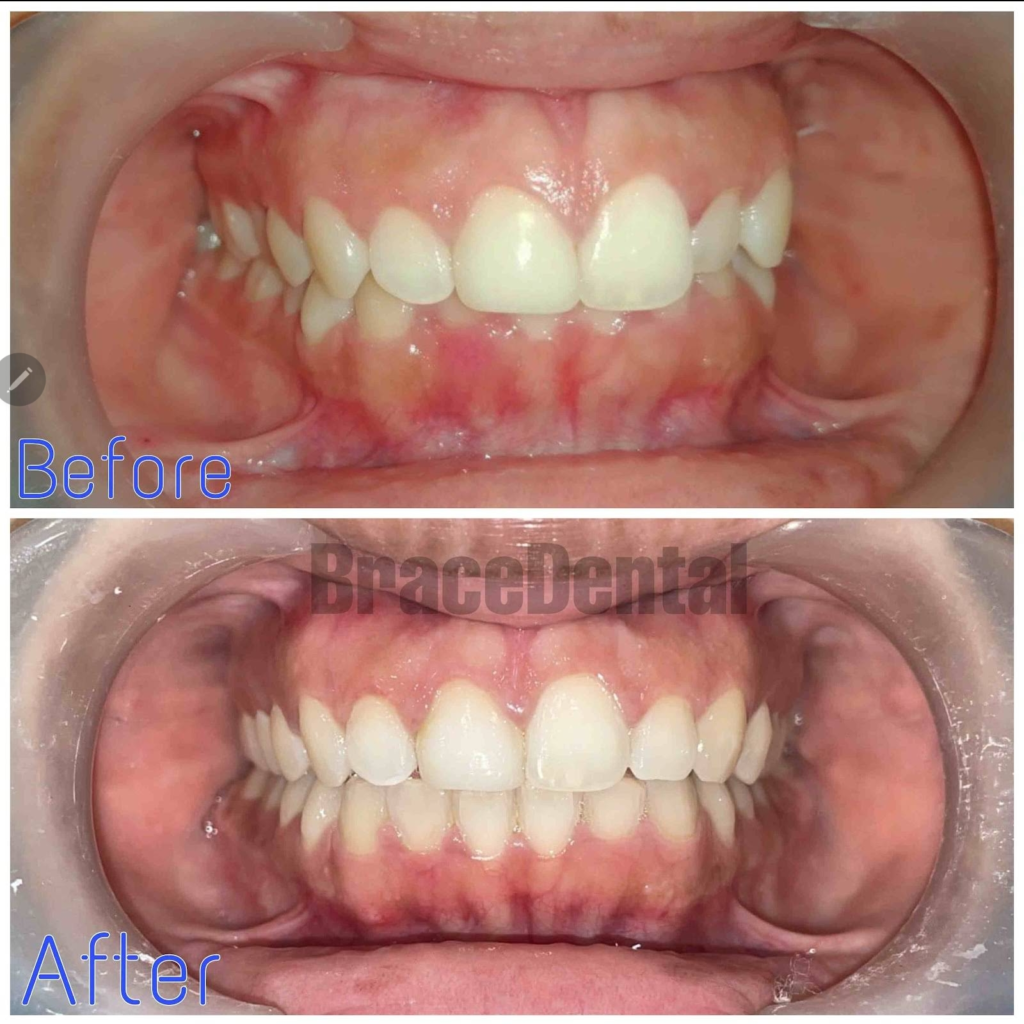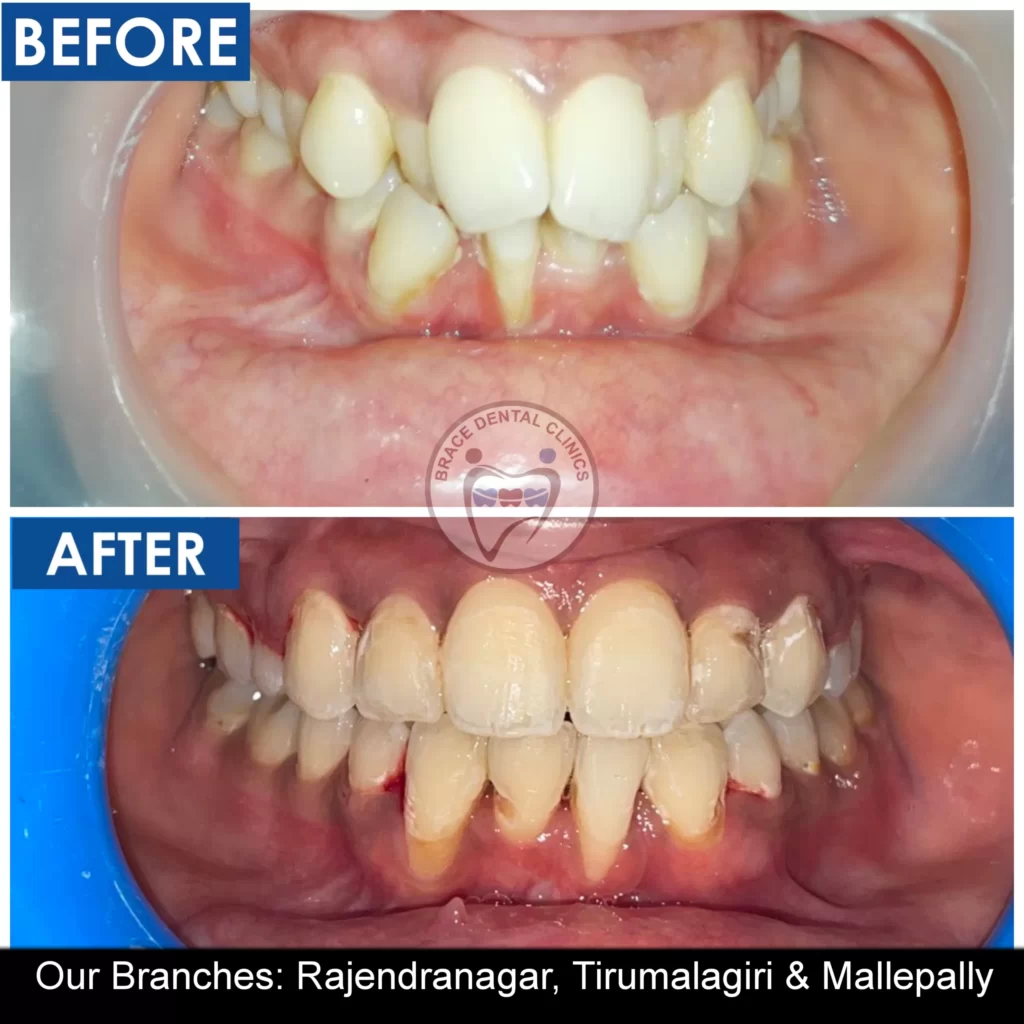Click to call
Irregular Teeth
Most common causes of irregular teeth:
1) Midline Diastema

A midline diastema is simply a fancy term for a space between your two front teeth. It’s a common and perfectly natural feature of many smiles, and the size of this space can vary. Think of it as your smile’s unique signature! This gap can come from various sources: it might be something you inherited from your parents, a reminder of childhood habits like thumb sucking, or just the way your teeth decided to arrange themselves.
For some people, this gap is a part of their identity and charm, something they wouldn’t change for the world. For others who might feel a bit self-conscious about it, there are several simple and effective ways to close the gap, including braces, clear aligners, dental bonding, or veneers. These options are all about enhancing your smile in a way that feels right to you.
Deciding whether to keep or close your gap is a personal choice. Whatever you decide, remember your smile is a reflection of you, and there are options available to make sure it shines in a way that makes you happy.
2) Overbite (Deep Bite):

Imagine your upper front teeth covering up your lower front teeth a little too much. That’s an overbite. When they overlap more than they should, it might cause some discomfort in your jaw or wear down your lower teeth quicker than usual.
3) Underbite:
Now picture the opposite scenario – your lower teeth sticking out past your upper teeth because your lower jaw is a bit more forward. This can make biting and chewing a bit tricky since the teeth aren’t aligning as they naturally should.
4) Overjet:
Imagine closing your jaws and still being able to see a gap between your upper and lower teeth, like they’re shy and won’t touch. This could be due to old habits like thumb sucking or how your bones have grown. It might make biting into a sandwich a bit of an adventure.
5) Crossbite:
This is when some of your upper teeth decide to take a shortcut and bite inside your lower teeth instead of outside. It can happen in the front or the sides and might cause your teeth to wear down unevenly or affect how your jaw grows.
6) Openbite
Sometimes mixed up with an overbite, an overjet is about how far forward your upper teeth jut over your lower teeth, but in a horizontal direction. If there’s a lot of space, those front teeth are more at risk of bumps and knocks.
7) Crowding:

Picture a crowded bus but with teeth – there’s not enough room for everyone to sit comfortably. This can make it tough to keep your teeth clean and could increase the chance of cavities or gum problems.
8) Openbite
The opposite of crowding, this is when your teeth decide they need a little more personal space, leaving gaps. Sometimes it’s because a tooth didn’t show up, or your jaw has extra room. While gaps can be a style statement, they might also affect how your teeth work together.
